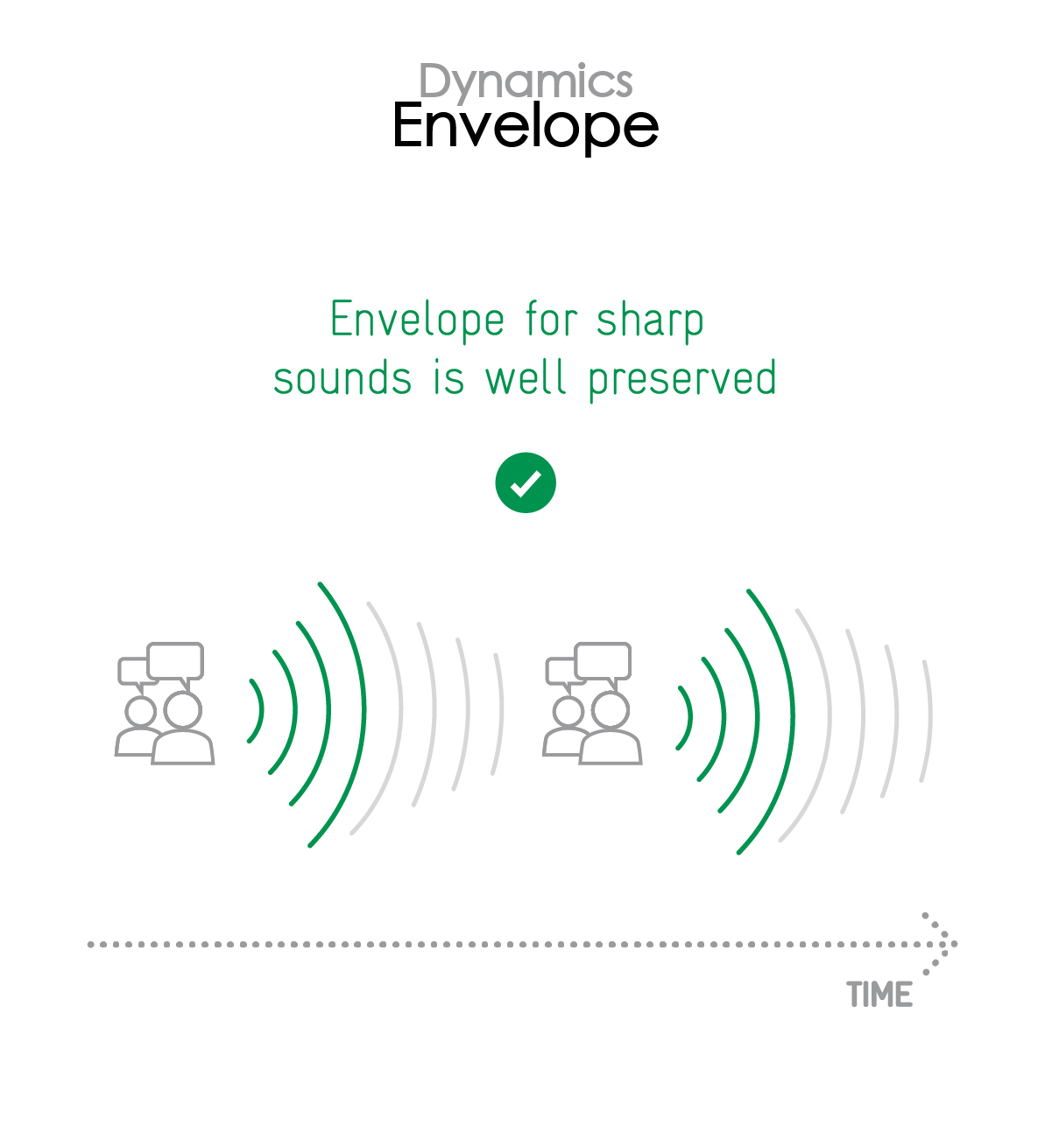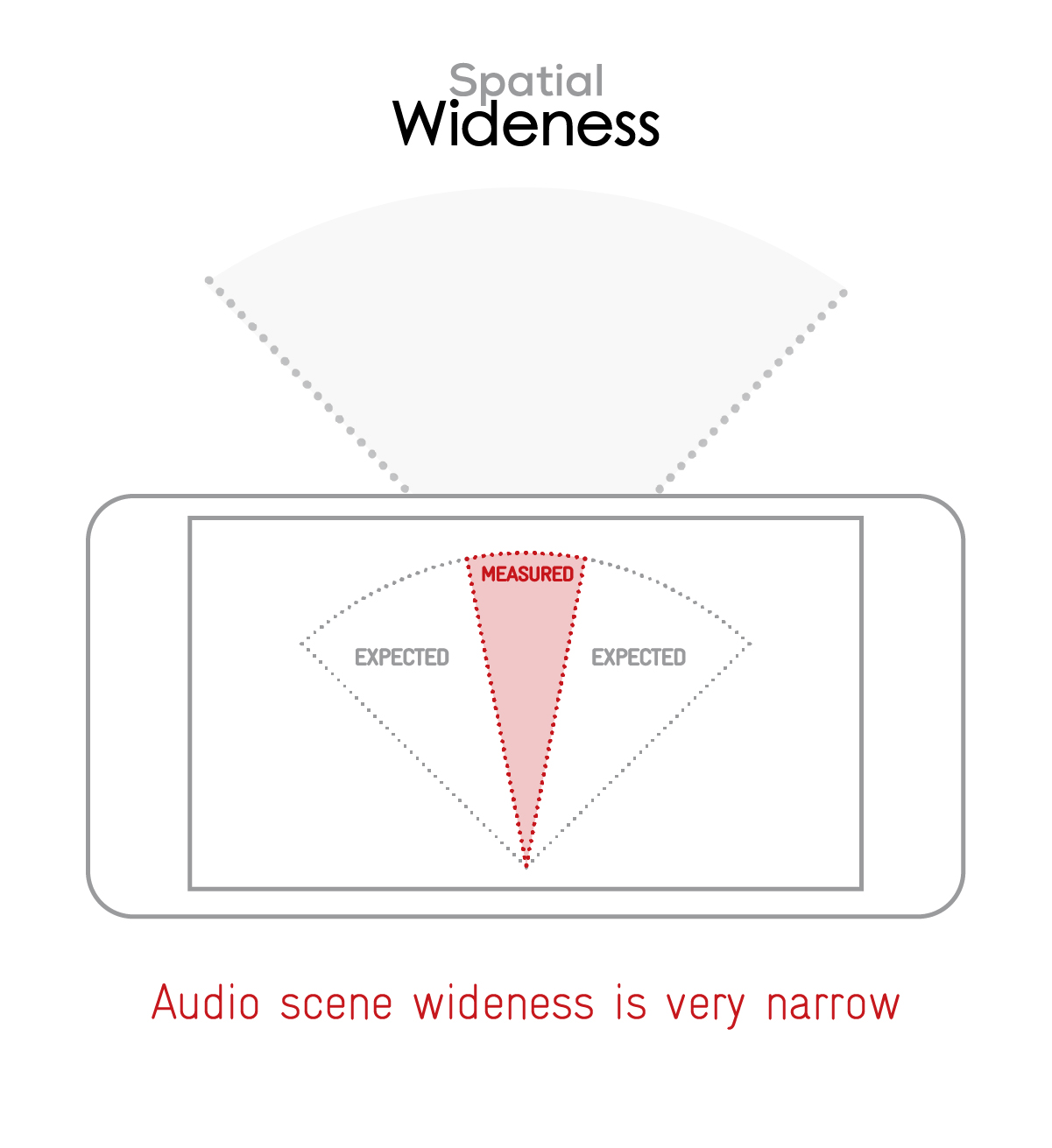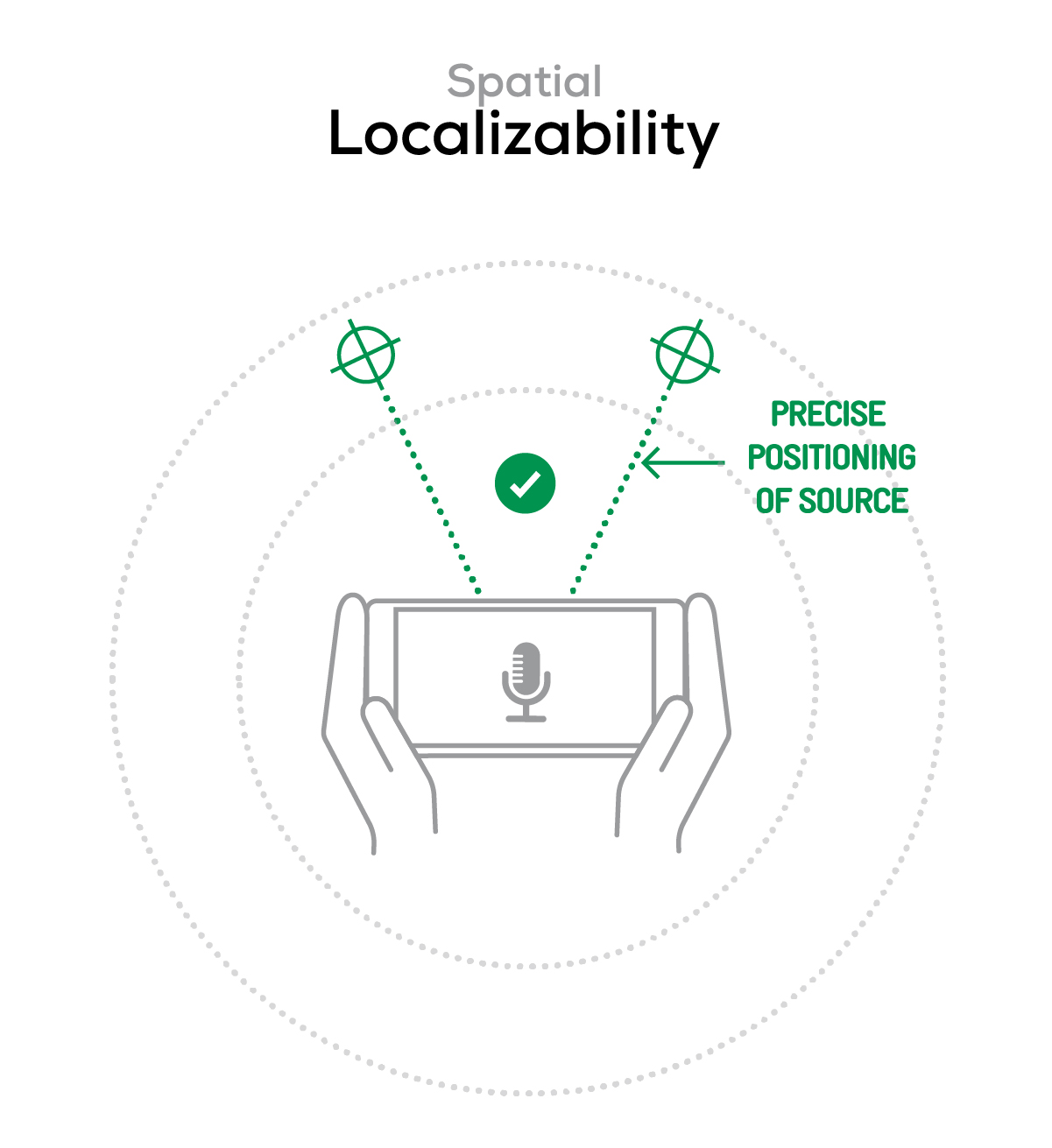The Google Pixel 5, introduced at the end of September 2020, represents somewhat of an anomaly in the smartphone world. Instead of following up the Pixel 4 by stacking on more features, performance boosts, and superlatives, Google has pared back some features and kept the price relatively low for a flagship phone, focusing on the basics and practicalities. It boasts of being fast, splash-proof, and having a long battery life.
Powered by the mid-range Qualcomm Snapdragon 765G, the updated Pixel 5 has 8 GB of RAM, 128 GB storage, and a full-screen 6.0-inch display, which is a bit larger than the 5.7-inch Pixel 4 screen. On the audio front, the device has two speakers, one front-firing and one bottom-side firing, three microphones, and noise suppression. In its marketing pitch for the device, Google doesn’t tout any particular tuning or other claims for the audio beyond that, keeping its focus on the essentials.
Audio specifications include:
- Stereo speakers, one front-firing, one bottom side-firing
- 3 microphones
- No audio jack
About DXOMARK Audio tests: For scoring and analysis in our smartphone audio reviews, DXOMARK engineers perform a variety of objective tests and undertake more than 20 hours of perceptual evaluation under controlled lab conditions. This article highlights the most important results of our testing. Note that we evaluate both Playback and Recording using only the device’s built-in hardware and default apps. (For more details about our Playback protocol, click here; for more details about our Recording protocol, click here.)
Test summary
Scoring
Sub-scores and attributes included in the calculations of the global score.
Google Pixel 5


With an overall score of 68, our DXOMARK Audio testing protocol placed the Google Pixel 5 well above average. It’s not on par with the Xiaomi Mi 10 Pro, which stands alone at the top with 76, but it matched scores with the Samsung Galaxy Note20 Ultra 5G, for example, which puts it among good company among flagship smartphones. While it earned the same score as its predecessor, the Google Pixel 4, the particulars were different. The Pixel 4 was stronger in playback and weaker as a recording device, while the Pixel 5 actually lost some ground in playback, but improved performance fairly dramatically in recording.
In playback testing, the Google Pixel 5 produced clean sound with very few artifacts. Our engineers noted decent high-end extension in timbre, and good intelligibility of dynamic content — expressing the energy of the music or soundtrack well, even at minimum volume. They also gave balance high marks — voice content was well-centered in all use cases. As for the negatives, the prominent midrange and lack of low-end extension impinged on tonal balance and the overall user experience. In terms of the spatial attribute, content did not sound wide. The inconsistent midrange also drew down the scores for distance and localizability. The aggressive upper midrange held back attack, and the lack of low-end extension impeded bass precision and punch. Nominal volume was a bit too low in the game use case. At maximum volume, there was some bass distortion.
As a recording device, the Google Pixel 5 scored quite well. Our engineers noted above-average timbre performance and good tonal balance, thanks to clean midrange, discreet but precise bass, and good high-end extensions. The loudness was apt in in the majority of the use cases, and Pixel 5 recordings showed few artifacts overall, also scoring well for avoiding occlusions from users’ fingers and hands. Its dynamics performance was strong, capturing the energy of content, with sharp attack, precise bass, and a well-preserved sound envelope. On the minus side, the lack of low content slightly impairs tonal balance performance. In the memo app, below-average volume performance and mono recording lowered the score. There were also some artifacts, such as hissing and compression.
Sub-scores explained
The DXOMARK Audio overall score of 68 for the Google Pixel 5 is derived from its Playback and Recording scores and their respective sub-scores. In this section, we’ll take a closer look at these audio quality sub-scores and explain what they mean for the user.
Playback

Timbre
Google Pixel 5
56
89
Timbre tests measure how well a phone reproduces sound across the audible tonal range and takes into account bass, midrange, treble, tonal balance, and volume dependency.
The Google Pixel 5 did not score particularly well for timbre, landing in the average to below-average group. The overall tonal balance is thrown off between a dominant upper midrange and a lack of low-end extension.
The high-end extension is above average, but loses some brilliance when held in portrait mode. The high-mids are too prominent and sound aggressive at maximum and soft volumes.

Dynamics
Google Pixel 5
63
81
DXOMARK’s dynamics tests measure how well a device reproduces the energy level of a sound source, and how precisely it reproduces bass frequencies.
The Google Pixel 5 fares somewhat better with its dynamics score. The attack performance is average, held back by an excess of upper-midrange frequencies. The lack of low-end extension hinders bass precision and punch.

Spatial
Google Pixel 5
63
88
The sub-attributes for perceptual spatial tests include localizability, balance, distance, and wideness.
The Google Pixel 5 turns in an average performance in the spatial attribute. The inconsistent midrange gets in the way of good distance and localizability performance. Balance is on target, but centered voices are perceived slightly upward in the audio scene. And that audio scene does not sound wide, which diminishes the overall experience.



Volume
Google Pixel 5
70
91
Volume tests measure both the overall loudness a device is able to reproduce and how smoothly volume increases and decreases based on user input.
The Google Pixel 5 scored in the upper echelon of smartphones in the volume attribute. The consistency of volume increase was fairly smooth. It did not quite match the maximum volume of its predecessor, the Google Pixel 4, but its minimum volume step was louder, and the intelligibility of dynamic content was good. The volume was a bit low at the nominal level in the games use case.
| Hip-Hop | Classical |
| 75.2 dBA | 72.4 dBA |

Artifacts
Google Pixel 5
89
113
Artifacts tests measure how much source audio is distorted when played back through a device’s speakers. Distortion can occur both because of sound processing in the device and because of the quality of the speakers.
With a sub-score of 89, the Google Pixel 5 is in elite company. The top score is 90, held jointly by the Samsung Galaxy Note20 Ultra and the Black Shark 3 Pro. Our engineers found few artifacts overall. There was some bass distortion at maximum volume, which isn’t unusual, and noise is somewhat perceptible on the reference tracks. The bottom side-firing speaker could be easily occluded in the games use case; the other speaker is behind the screen, meaning that it’s very difficult to occlude.
Recording

Timbre
Google Pixel 5
81
91
The Google Pixel 5 turned in a solid performance in timbre as a recording device, with a score near the top in this sub-category. The trebles and midrange were clean, and even if bass wasn’t as present, it was precise. That bass, however, displayed a lack of boominess that hindered tonal balance.
Despite being clear, the Pixel 5’s treble becomes almost shrill, making the timbre seem a little too bright overall.

Dynamics
Google Pixel 5
67
81
With a recording dynamics sub-score of 67, the Google Pixel 5 turns in a strong performance among similar devices. Clear timbre assists the sharp attack and well-defined envelope. Bass is precise, even if it’s not quite present enough in the mix. The noise reduction boosts the good signal-to-noise ratio performance.


Spatial
Google Pixel 5
59
78
The Google Pixel 5 turns in an average performance for the spatial sub-category, though delving down deeper into this category reveals mixed results. The devices shows a fairly good performance for localizability and wideness in the life video use case, but leaves much to be desired in the selfie and meeting room use cases.


While wideness is very good when using the rear camera, it’s the opposite with selfie videos. The memo app also shows a lack of wideness because it records in mono.

Volume
Google Pixel 5
71
99
As a recording device, the Google Pixel 5 earned an average score for volume. Our engineers were not impressed with its performance for loudness, however, except in the outdoor scenario.
Here are our test results, measured in LUFS (Loudness Unit Full Scale). As a reference, we expect loudness levels to be above -24 LUFS for recorded content:
| Meeting | Life Video | Selfie Video | Memo |
| -28.8 LUFS | -20 LUFS | -19 LUFS | -22.8 LUFS |

Artifacts
Google Pixel 5
84
97
The Google Pixel 5 grabbed our top score for artifacts as a recording device, with a sterling overall performance. Our engineers noticed very few artifacts, even in the high SPL scenario (as in our electronic concert use case), except for some slight distortion on shouting and very slight hissing on sibilances.
See if you can detect those characteristics in this sample recording:
The background sub-score is low in part because the memo app only records in mono. Overall background is clear and at a comfortable level, but not very realistic because of the lack of bass.
Conclusion
The Google Pixel 5 turned in a solid performance overall, with no huge flaws and mostly above-average marks across all attributes. In comparing it with the Google Pixel 4, it lost a little bit of ground in terms of playback but picked up ground as a fairly agile recording device. In terms of playback, it delivered decent high-end extension in timbre, and good intelligibility of dynamic content, even at minimum volume, and our engineers noted few artifacts. But the tonal balance was off because of a too-prominent upper midrange and a lack of low-end extensions. The inconsistent midrange impaired localizability and distance in the spatial attribute.
As a recording device, the Google Pixel 5 had a strong showing, with above-average timbre performance, good tonal balance, and good loudness in most use cases. It earned our top score for artifacts as a recording device, handling occlusions well and producing clean recordings. Its dynamics performance also earned high marks, thanks to sharp attack, precise bass, and a well-preserved envelope. On the negative side, the lack of low content hindered tonal balance. The memo app produced a couple of disappointing results, in part because of the mono recording but also because of a below-average volume performance.
Playback
Pros
- Decent high-end extension in timbre
- Few artifacts
- Good balance, with centered voice content
Cons
- Audio content doesn’t sound wide.
- Tonal balance is skewed by prominent upper midrange and lack of low-end extensions.
- Inconsistent midrange hinders distance and localizability.
Recording
Pros
- Above-average timbre performance
- Excellent artifacts performance
- Good loudness in most use cases
Cons
- Mono recording of the memo app eliminates wideness and hinders localizability.
- Lack of low-end extension slightly impairs tonal balance.



DXOMARK encourages its readers to share comments on the articles. To read or post comments, Disqus cookies are required. Change your Cookies Preferences and read more about our Comment Policy.